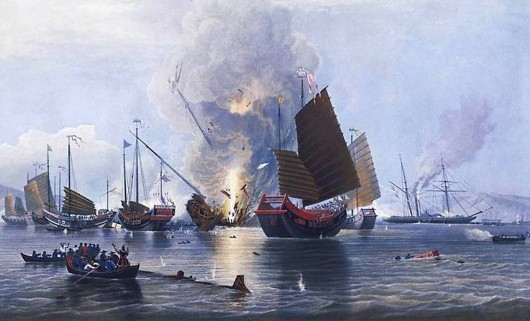
The Treaty of Nanking (Nanjing Treaty) is an uneven treaty that ended the First Opium War between the British Empire and the Qing Empire in 1839-42.
Treaty negotiation
In view of China's defeat in the Opium War, representatives of the British Empire and Qing negotiated a peace treaty aboard the British warship HMS Cornwallis in Nanjing. On August 29, 1842, the British representative Sir Henry Pöttinger and the Qing representatives, Messrs. Qiying, Ilibu and Niujian, signed the Treaty of Nanking. The treaty consisted of thirteen articles and was ratified by Queen Victoria and Emperor Daoguang ten months later.
Foreign trade
The main purpose of the treaty was to change the scheme by which foreign trade was governed since 1760. The treaty abolished the monopoly of the thirteen countries regarding foreign trade in Canton and in return enabled five ports to trade, Canton, Amoy, Foochow , Ningpó and Shanghai, where the British could trade without any restrictions. Britain also obtained the right to assign consulates at ports indicated in the treaty, which were given the right to communicate directly with local Chinese authorities. The treaty was the first in a series of treaties, often called the "unequal treaties," that China signed with Western nations during the XNUMXth century. The treaty stipulated that trade in the indicated ports would be subject to fixed rates, which would be established between the British and Qing governments.
More information - History of Hong Kong 1
Source - History classes